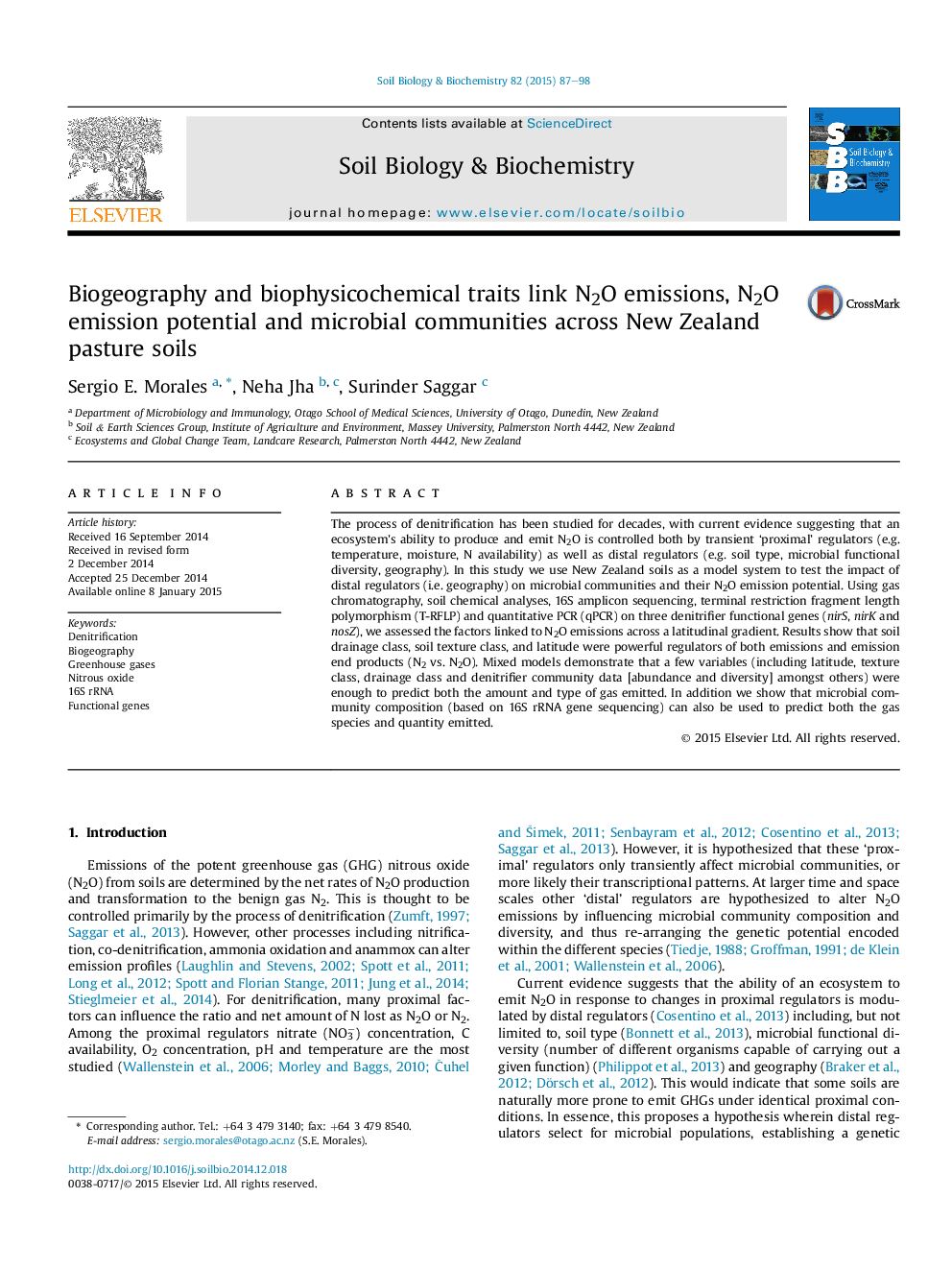| Article ID | Journal | Published Year | Pages | File Type |
|---|---|---|---|---|
| 2024485 | Soil Biology and Biochemistry | 2015 | 12 Pages |
•Microbial populations, chemistry and N2O emissions linked to latitude of pastures.•DEA, DR, and N2O/(N2O + N2) are linked to microbial community composition.•Prediction of emissions with high accuracy using a small subset of variables.•Soils at lower latitudes are not emitting to their maximum potential.
The process of denitrification has been studied for decades, with current evidence suggesting that an ecosystem's ability to produce and emit N2O is controlled both by transient ‘proximal’ regulators (e.g. temperature, moisture, N availability) as well as distal regulators (e.g. soil type, microbial functional diversity, geography). In this study we use New Zealand soils as a model system to test the impact of distal regulators (i.e. geography) on microbial communities and their N2O emission potential. Using gas chromatography, soil chemical analyses, 16S amplicon sequencing, terminal restriction fragment length polymorphism (T-RFLP) and quantitative PCR (qPCR) on three denitrifier functional genes (nirS, nirK and nosZ), we assessed the factors linked to N2O emissions across a latitudinal gradient. Results show that soil drainage class, soil texture class, and latitude were powerful regulators of both emissions and emission end products (N2 vs. N2O). Mixed models demonstrate that a few variables (including latitude, texture class, drainage class and denitrifier community data [abundance and diversity] amongst others) were enough to predict both the amount and type of gas emitted. In addition we show that microbial community composition (based on 16S rRNA gene sequencing) can also be used to predict both the gas species and quantity emitted.
